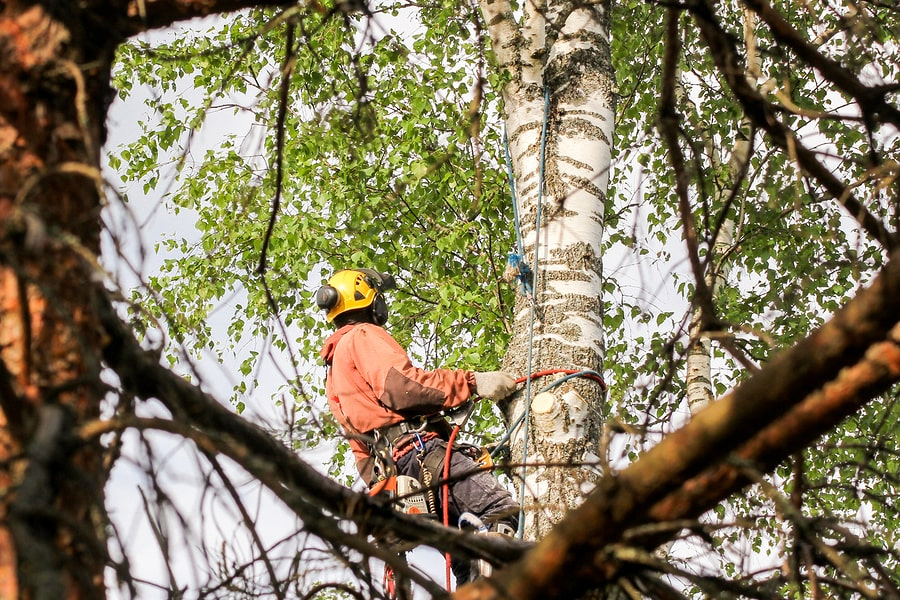The Secrets of Tree Pollarding: A Guide to Sustainable Tree Management

Image Source: treepruning.com.sg
Tree pollarding is a traditional tree maintenance technique that has been practised for centuries, dating back to medieval times in Europe. Originating as a means to provide a sustainable source of timber for firewood and other purposes, pollarding has evolved into a modern arboricultural practice aimed at managing tree growth and promoting longevity. This method involves the systematic removal of all limbs back to the main trunk, typically at a height of two to three metres above ground level. By restricting the growth of the tree canopy, pollarding encourages the development of dense lateral branches, creating a distinctive and aesthetically pleasing crown.
The Process of Tree Pollarding
To carry out tree pollarding effectively, arborists require specialized tools and equipment, including pruning saws, loppers, and safety gear such as harnesses and helmets. The process begins with the careful selection of suitable trees for pollarding, considering factors such as species, age, and health. Once identified, the tree is pruned according to established guidelines, with all branches removed to the predetermined height. This initial cutting stimulates new growth, which is subsequently managed through regular maintenance to maintain the desired shape and size.
Benefits of Tree Pollarding
One of the primary benefits of tree pollarding is the control of tree size, making it particularly useful in urban areas where space is limited or trees have been planted in close proximity to structures. By restricting the spread of the canopy, pollarding helps to prevent issues such as shading, root intrusion, and damage to buildings. Furthermore, pollarded trees are less prone to storm damage and windthrow, reducing the risk of falling branches and potential hazards to property and people.
In addition to size control, tree pollarding promotes tree health and longevity by stimulating vigorous regrowth and rejuvenating older specimens. By removing dead or diseased wood and encouraging the development of new shoots, pollarding helps to improve air circulation and sunlight penetration within the canopy, fostering a healthier environment for the tree to thrive. Moreover, the regular pruning associated with pollarding can help to mitigate the effects of pests and diseases, reducing the need for chemical treatments and enhancing overall tree resilience.
Environmental Considerations
While tree pollarding offers numerous benefits, it is essential to consider its potential impact on the surrounding environment. Pollarded trees may provide valuable habitat and food sources for wildlife, particularly birds and insects attracted to the dense foliage and abundant new growth. However, excessive pruning and removal of branches can disrupt existing ecosystems, potentially reducing biodiversity and altering local ecosystems. Therefore, it is crucial to strike a balance between tree management objectives and ecological conservation efforts, ensuring that pollarding practices are conducted in a sustainable and responsible manner.
Applications and Practical Uses
Tree pollarding finds diverse applications in various settings, ranging from urban landscaping and street tree management to orchard cultivation and historic preservation. In urban areas, pollarded trees are commonly used to line streets, parks, and public spaces, providing shade, enhancing aesthetics, and improving air quality. Similarly, in orchards and agricultural settings, pollarding can help to optimize fruit production, facilitate harvesting, and extend the productive lifespan of trees. Moreover, pollarded trees are often valued for their cultural and historical significance, particularly in traditional landscapes and heritage sites where they contribute to the character and identity of the surroundings.
Addressing Common Misconceptions
Despite its long history and widespread use, tree pollarding is sometimes misunderstood or misrepresented, leading to misconceptions about its effectiveness and impact. One common misconception is that pollarding harms trees by causing stress or reducing their lifespan. However, when carried out correctly by trained professionals, pollarding is a safe and sustainable practice that can benefit tree health and longevity. Another misconception is that pollarding results in unsightly or disfigured trees, detracting from their aesthetic value. While pollarded trees may initially appear bare or sparse immediately after pruning, they typically regrow vigorously, producing dense foliage and a well-proportioned crown over time.
Expert Insights and Recommendations
For those considering tree pollarding as a management option, consulting with qualified arborists and tree care professionals is essential. Arborists can assess the suitability of trees for pollarding, recommend appropriate pruning techniques, and provide guidance on long-term maintenance strategies. Additionally, arborists can offer valuable insights into local regulations and guidelines governing tree pruning and preservation, ensuring that pollarding practices comply with legal requirements and environmental standards. By partnering with knowledgeable experts, property owners and managers can ensure the health, safety, and beauty of their trees for generations to come.




